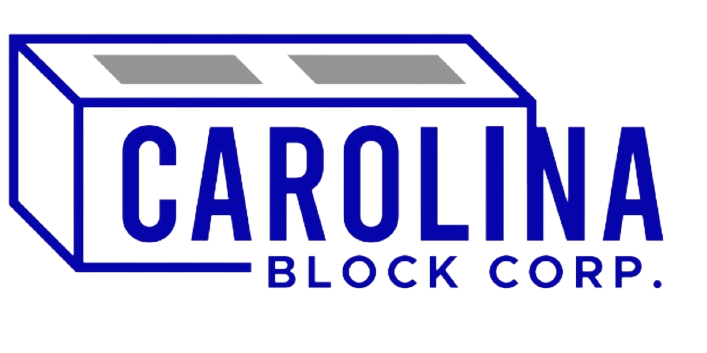When it comes to successful construction project management, several key strategies can make all the difference.
Table of Contents
ToggleFrom establishing clear project objectives to effective communication and team coordination, mastering construction project management is essential for contractors looking to ensure the success of their projects.
In this blog post, we will explore seven crucial strategies that can help construction contractors navigate the complexities of project management and achieve their goals.

Establishing Clear Project Objectives and Scope
In the intricate world of construction project management, laying a strong foundation begins with the precise establishment of project objectives and scope.
This initial step transcends mere preliminary planning; it’s the cornerstone upon which the entire project’s success is built.
Crafting crystal-clear objectives and a comprehensive scope involves more than listing desired outcomes—it requires a deep dive into the project’s vision, identifying the specific, measurable achievements expected upon completion.
For construction contractors, the art of defining these objectives and the project’s scope is akin to drawing a detailed map before embarking on a journey.
It sets the direction, outlines the terrain, and highlights potential obstacles.
This clarity not only aligns the project team but also fosters an environment where every stakeholder understands the project’s ultimate goals and their role in reaching them.
It’s a strategic move to mitigate the common pitfalls of scope creep, which can lead to budget overruns and project delays, and to ensure that every action taken moves the project forward in its intended direction.
The process of establishing clear project objectives and scope should involve all key stakeholders.
Through collaborative sessions, every voice is heard, and every concern addressed, ensuring that the project’s scope is not only ambitious but also realistic and attainable.
This inclusive approach not only enhances buy-in but also leverages the collective expertise of the team, leading to more innovative solutions and a more robust project plan.
Moreover, a well-defined project scope provides a baseline for monitoring and controlling project progress.
It becomes the benchmark against which all project activities are measured, enabling project managers to make informed decisions, prioritize resources effectively, and navigate the complexities of construction project management with confidence.
As such, this crucial strategy is not merely about documenting objectives and limitations; it’s about creating a shared vision that guides every phase of the project, ensuring that every step taken is a step toward success.
Developing a Robust Project Plan
At the heart of successful construction project management lies the development of a robust project plan.
This plan serves as the architectural blueprint for the entire project, meticulously outlining every task, deadline, resource allocation, and individual responsibility.
Think of it as the scaffolding that supports the project from inception to completion, providing a structured framework within which every piece of the project puzzle fits perfectly.
Crafting such a plan requires a delicate balance between comprehensive detail and adaptable simplicity.
It begins with breaking down the project into manageable tasks, each defined by its scope, required resources, and deadlines.
This decomposition is crucial for understanding the project’s complexity and for identifying critical paths and potential bottlenecks that could impact project timelines.
Resource allocation is another cornerstone of a robust project plan. This not only involves assigning the right mix of skills and manpower to each task but also ensuring that building material resources are available when needed.
It’s a logistical ballet, coordinating the availability of resources with the project timeline, to ensure that every phase of the project progresses without unnecessary delays.
Responsibility assignment is equally vital. Each task must have a designated owner, someone who is accountable for its completion on time and to the specified quality.
This clarity in responsibility helps to foster a culture of accountability and commitment among the team members, driving the project forward with a shared sense of purpose.
Yet, the true strength of a robust project plan lies in its flexibility. While it provides a detailed roadmap for the project, it must also allow for adjustments in response to unforeseen challenges or changes in project scope.
Adaptability is Key
This adaptability is key to navigating the complexities of construction project management, enabling the team to pivot as necessary while keeping the project’s objectives firmly in sight.
Developing such a plan is not a one-off task but a dynamic process that continues throughout the project’s life cycle.
It requires ongoing review and refinement, a collaborative effort that leverages the collective expertise and insight of the entire project team.
In doing so, it becomes not just a document, but a living framework that guides the project to successful completion.

Effective Communication and Team Coordination
Effective communication and team coordination sits at the heart of propelling construction project management from good to great.
This isn’t just about ensuring that everyone knows what’s happening; it’s about cultivating an ecosystem where the flow of information is seamless and intuitive.
In the dynamic landscape of a construction project, every team member, from architects to engineers, from subcontractors to suppliers, plays a pivotal role.
The power of effective communication lies in ensuring that these diverse voices find harmony, aligning towards common objectives with precision and clarity.
The adoption of regular team meetings is more than a procedural step; it’s a forum for synergy, where ideas collide, challenges are dissected, and solutions are born.
These gatherings, whether held on-site or through digital platforms, serve as the pulse point of the project, ensuring that every stakeholder is synchronized with the project’s rhythm and pace.
Meanwhile, progress updates become the narrative that tracks the project’s journey, highlighting achievements, and identifying areas needing attention, keeping the storyline clear and focused.
Feedback sessions transcend the traditional hierarchy, opening the floor to insights from every tier of the project team.
This democratic approach to communication fosters a culture of respect and inclusion, where the expertise of each individual is recognized as a valuable asset to the project’s success.
It is within this environment of open dialogue and mutual respect that the most innovative solutions are often found, and the path to overcoming unforeseen challenges is illuminated.
In essence, mastering the art of effective communication and team coordination in construction project management is akin to conducting an orchestra.
Each member must know their part, listen intently to their fellow musicians, and stay attuned to the conductor’s baton.
Only then can the collective endeavor translate into a symphony of project success, harmoniously blending the myriad elements of construction into a masterpiece of efficiency, quality, and innovation.
Sourcing Reliable Suppliers and Ensuring Quality Materials
Navigating the complex landscape of construction project management requires not just skill and determination but also an unyielding commitment to quality at every turn.
Central to this commitment is the strategic sourcing of reliable construction materials suppliers and the uncompromising insistence on high-quality materials.
This facet of project management transcends mere transactional relationships with vendors; it is about forging partnerships that are built on trust, reliability, and mutual respect.
The journey to sourcing reliable building materials from reliable suppliers begins with a meticulous vetting process.
This entails delving into the suppliers’ history, understanding their supply chain logistics, and assessing their ability to meet project deadlines with consistency.
It’s about looking beyond the surface, evaluating their track record in handling the unforeseeable whims of market availability and their resilience in navigating the unpredictable tides of supply chain challenges.
Equally paramount is the assurance of material quality.
This demands more than just accepting suppliers’ assurances at face value.
It involves rigorous testing and quality checks, ensuring that every material meets or surpasses industry standards. The objective is clear: to prevent the costly and time-consuming setbacks that come with inferior materials.
This meticulous approach to quality assurance not only safeguards the project’s integrity but also its longevity.
Moreover, establishing strong relationships with suppliers paves the way for negotiation advantages, prioritized service, and the potential for favorable pricing—all of which contribute significantly to the project’s overall success.
By placing a premium on these relationships, construction contractors can create a reliable network of suppliers that serve not just as vendors, but as partners in the truest sense, contributing to the project’s seamless execution and its ultimate triumph.

Leveraging Technology for Enhanced Efficiency
In the realm of construction project management, embracing technology stands as a beacon of progress, offering pathways to unprecedented efficiency and clarity.
The integration of advanced digital tools, from sophisticated project management software to the aerial perspectives provided by drones, from the immersive realms of BIM (Building Information Modeling) technology to mobile applications, has the power to transform traditional practices into a seamless, more productive workflow.
The strategic application of these technologies enables a granular level of control and visibility over projects that was previously unattainable.
Project management software becomes the central nervous system of the project, offering a real-time dashboard that highlights progress, tracks deadlines, and allocates resources with a level of precision that minimizes waste and maximizes productivity.
Drones provide an eagle-eye view of a construction site
The use of drones for aerial site surveys, on the other hand, provides an eagle-eye view of the construction site, facilitating more accurate planning, monitoring, and inspection processes that can significantly reduce the time spent on manual surveys.
Moreover, BIM technology invites stakeholders into a digital construction environment where every detail of the project, from spatial relationships to geographic information and quantities and properties of building components, can be visualized and manipulated.
This not only enhances decision-making and collaboration but also significantly mitigates the risk of costly errors and reworks.
The leverage of mobile technology further ensures that communication lines remain open and information flows freely among team members, regardless of their physical location.
This ubiquity of access to project data ensures that decision-making is informed, timely, and responsive to the project’s needs.
In weaving these technological strands into the fabric of construction project management, the industry not only strides towards heightened efficiency and productivity but also fosters an environment where innovation thrives.
This technological embrace, therefore, is not merely about adopting new tools; it’s about cultivating a mindset of continuous improvement and innovation that propels construction projects toward their successful realization.
Implementing Effective Risk Management Practices
In the complex arena of construction project management, navigating the multifaceted risks presents a formidable challenge that demands a proactive and strategic approach.
The essence of effective risk management lies in the ability to foresee potential pitfalls, comprehensively evaluate their possible impact, and craft robust strategies to neutralize them.
This preemptive strategy is not just about safeguarding the project against setbacks; it’s about empowering it to thrive even in the face of uncertainty.
The journey of implementing effective risk management begins with a thorough risk assessment.
This involves an intricate process of identifying potential risks, from logistical snags to supply chain disruptions and evaluating them for their likelihood and potential impact on the project.
Such a detailed analysis requires a blend of historical data, industry knowledge, and foresight, setting the stage for informed decision-making.
Once risks are identified and assessed, the next step is developing a mitigation strategy.
This could range from securing alternate suppliers to buffer against supply chain volatility to implementing safety protocols that minimize the risk of on-site accidents.
Each strategy is tailored to the unique challenges and complexities of the project, ensuring a bespoke shield against potential threats.
Crucially, risk management is an ongoing endeavor, not a one-time task. It demands continuous vigilance, with strategies being reviewed and adjusted in response to new insights or changes in the project landscape.
This dynamic approach ensures that the project not only remains on course but is also resilient enough to weather the storms that may arise, keeping the path clear for smooth sailing towards project completion.
Continuous Monitoring and Adaptation
The essence of steering a construction project toward success lies in the vigilant eyes of continuous monitoring coupled with the agility of adaptation.
This process is akin to navigating through a dynamic landscape, where each step forward is measured against the project’s blueprint, ensuring alignment with the initial goals while being receptive to the winds of change.
It’s about staying attuned to the project’s pulse—meticulously tracking progress, resource allocation, and team performance.
In this dance of dynamic equilibrium, the ability to swiftly adjust strategies in response to emerging challenges or new opportunities becomes a potent tool in the arsenal of a construction project manager, guaranteeing that the journey toward project completion is both efficient and responsive to the evolving project environment.

